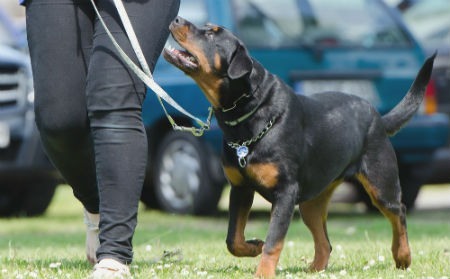Why is my dog afraid of other dogs? Causes and solutions
The sociability It is one of the characteristic features of the canine species. In general, dogs are animated by sharing with their human family, with their similar and with other species. Even so, it is normal to run into domestic pets that express fear and insecurity in front of other dogs. Each dog has a different personality and behavior, appropriate to their customs, life history and even race. So, just as there are outgoing dogs, there are others more shy and withdrawn.
How to interpret what my dog expresses?
Body language is the main tool you have at the time of Identify what your pet is feeling. The postures and movements, especially its tail and ears, in addition to the barking, grunts and vocalizations, are the way it has to express their emotions. Being aware of this set, it will be easier to act ideally to Help overcome fears.Identifying body language
- The look: Since the dog's gaze appears vulnerable, taking care not to lose sight of the figure or situation that generates anguish and at the same time trying to look threatening.
- The ears: They are usually back in alert and glued to the head.
- The body: The contraction of the muscles and the backward shrink intends to show helplessness, also to remain paralyzed or use the human as a protection wall.
- The tail: The rear zone shrunk and the tail involved between the legs demonstrates nervousness and is a maneuver to protect your body.

If your pet adopts some of these positions and attitudes in front of other dogs, keep in mind that your goal should not be to eliminate fear, understanding that it is a natural alert reaction to any situation that represents danger to it. Your work will be to make you progressively understand that you can relate to your environment without meaning a problem and that you will be to guarantee your well -being. Otherwise, Fear can become a phobia capable of causing greater damage.
Causes of fear in dogs
To determine what situations that involve other dogs generate uneasiness in your pet, pay attention and study their behavior. The factors that influence their way of establishing links with other canines are diverse.
- Traumatic experiences: The fears of a dog, even towards others of its species, can be the product of strong or traumatic emotions of the past, especially of their first years of life.
If your dog is adopted, ask his previous family details about his puppy stage. Any data per minimum that seems, is important. Even a game that has had with a larger and more energetic partner that would be abrupt, could have caused the damage.
- Poor socialization: The lack of contact with the outside world during the puppy stage, essentially between 2 and 4 months of age, harms the adult life of the dog. If it did not relate to other dogs, to children and adults; or with sounds, smells and public spaces, it will now be more complex.
- Reinforced fear: Your behavior can also reinforce your fears. Although it seems cruel, avoid stroking, hugging or talking in a tone too soft when it is distressed in front of another four legs. In doing so you would be approving his behavior and telling him that he has to fear. That you do not know does not mean that you are indifferent to what you are expressing.
What can I do to help you?
Help your furry friend overcome their fears in front of other dogs It requires an action plan with clear strategies and an adaptation period. The effectiveness of the two elements will depend almost 90% of your dedication. The keywords are: patience, love and progressivity. When we talk about strategies we refer to the techniques used for canine training. You do not have to be an expert to apply them, but you must be consistent and follow them almost to the letter.- Progressive desensitization: Despite sounding complicated, these are simple tasks such as walking with your pet in places that generally frequent and where they will face their fears.

If you have a herd, your support cane will be the canine with attitudes of leader (the present insecurity will then be its follower), but show the excitable and dominant dog that you are still the boss, in this way you will be claiming the territory of the insecure and you will do it strong. Do not push the shy, wait for him to contact. The same that applies in situations with unknown dogs with your pet.
- Positive reinforcement: Once you consider that your pet is already overcoming its greatest fear, being in the same environment with other animals, then applies the positive reinforcement. It is about rewarding it for what is considered good behavior, the incentive can be from a cookie to a toy.
It must be taken into account ...
It is important Respect your pet's learning process and adapt the techniques according to the answers you give. The love and patience will be the basis of a new and happy experience of your pet with others of its species. That said, if you do not feel sure to be able to execute these techniques without your dog running any risk, then it is best to resort to a professional.Share

